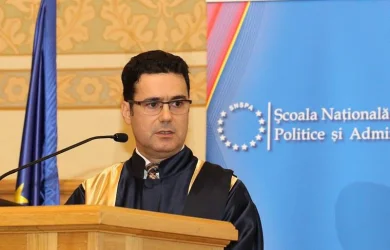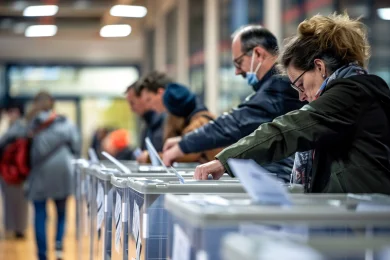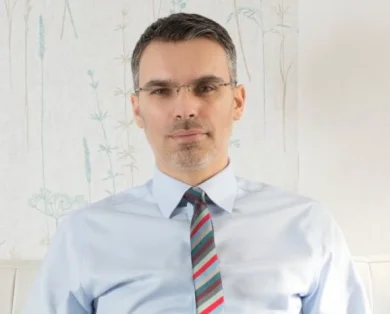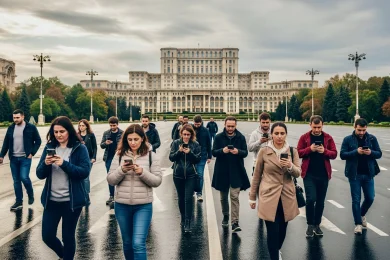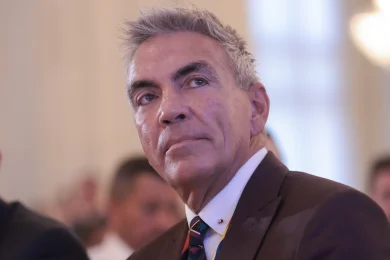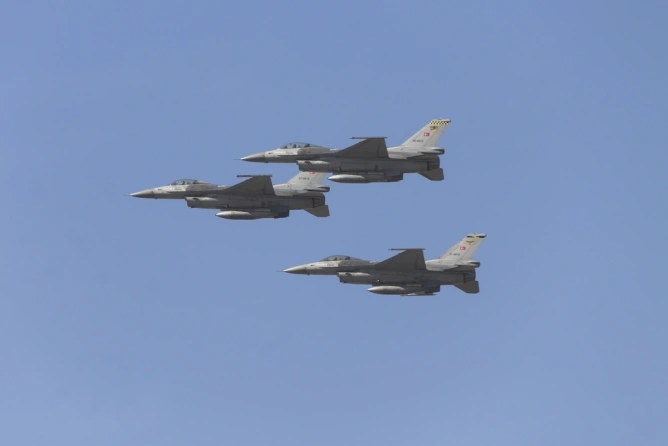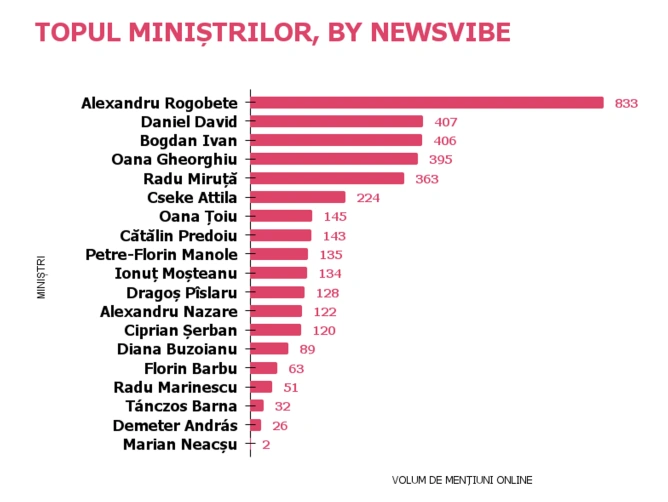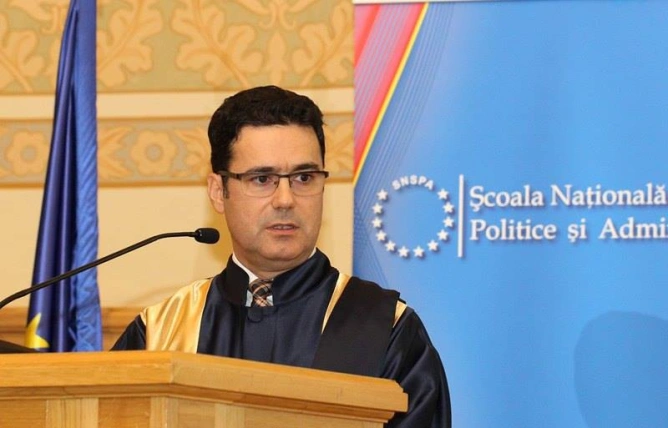
The presidential function is never reduced to the simple legal legitimacy provided by the vote. In a democracy, winning elections is the starting condition, not the final proof of competence or symbolic authority. Between the formal mandate and what we might call the deep legitimacy of leadership lies a subtle zone, difficult to define through rigid concepts, but easily recognized in practice: that of presidentiality.
Presidentiality does not mean being popular or having an extraordinary oratorical talent. Neither age, physical appearance, nor personal charisma guarantees such an attribute. It refers to the ability to transform the received vote into a moral and institutional authority, to embody the institution you represent, and to coalesce, around you, a sense of collective trust. A presidential figure is not just the administrator of a Constitution, but becomes a symbol of national cohesion, a reference point in times of crisis, and a voice that transcends the daily noise of politics.
Therefore, presidentiality must be distinguished from charisma. Charisma can captivate the masses for a moment, but it is often fleeting. Many charismatic leaders have been unable to provide stability, while more sober figures, lacking spectacle, have managed to become historical landmarks. Charles de Gaulle, for example, did not have the personal charm of a spontaneous orator, but he concentrated in his person all the dignity of post-war France. Franklin Delano Roosevelt, immobilized in a wheelchair many years before being elected, did not rely on physical image, but on the lucidity of vision and a mode of communication that inspired courage and hope. Vaclav Havel, a dissident intellectual without classical political training, did not impress with theatrical gestures, but with the moral strength of his presence. In all these cases, presidentiality was built from a mixture of symbolic authority, representational capacity, and firmness in crises.
In history, some leaders have become symbols of presidentiality, even in conditions that seemed to be against them. Franklin Delano Roosevelt, elected for the first time in 1932 and re-elected three more times consecutively, remains in history as the central figure of America in two dramatic moments: the Great Economic Crisis and World War II. Although polio had immobilized him in a wheelchair since 1921, Roosevelt was not perceived as a vulnerable man, but as a leader capable of conveying courage. His radio speeches (fireside chats) created a direct connection between the White House and citizens, providing comfort and hope in an era marked by uncertainty. In his case, presidentiality did not rely on physical strength or superficial charisma, but on the ability to show lucidity and stability when America was shaking.
Another remarkable example is Charles de Gaulle. A general during World War II and leader of Free France in exile, he returned to power in 1958, at a time of profound crisis when the Fourth French Republic was paralyzed by political instability and the war in Algeria. De Gaulle was elected the first president of the Fifth Republic in 1959 and led France until 1969. He was not a charismatic orator in the classical sense, but he was perceived as a symbol of national dignity and state continuity. His sober attitude, firm gestures, and refusal of easy compromises reinforced the idea that presidentiality is built on respect, not seduction.
Vaclav Havel, a dissident and playwright, became the first president of post-communist Czechoslovakia in 1989, following the Velvet Revolution, and later president of the Czech Republic from 1993 to 2003. He had neither administrative experience nor the classical structure of a political leader, but he offered something infinitely more precious: moral authority. Havel transformed the figure of the intellectual marginalized by the communist regime into a democratic authority, and his sobriety and modesty were perceived as signs of a rare authenticity. In his case, presidentiality did not come from the power of the institution, but from the personal strength to give meaning to a nation in a difficult transition.
Another example, from a completely different register, is Ronald Reagan. An actor and governor of California before being elected president of the United States in 1980, Reagan was not a man of intellectual refinement, but he had a special gift: the ability to convey optimism and clarity in a period marked by economic and geopolitical tensions. He served two consecutive terms (1981–1989), and his simple yet firm speech against communism and in favor of freedom contributed to the reconfiguration of the balance of power in the Cold War. Reagan's presidentiality did not lie in theoretical sophistication, but in the talent to make a vision intelligible to the masses and in the ability to project a strong and united America.
Although he was not president, Winston Churchill remains a textbook case for understanding presidentiality as a symbolic function. Becoming Prime Minister of Great Britain in May 1940, at a time when the country was on the brink of capitulation to Nazi Germany, Churchill managed, through memorable speeches and an unyielding resistance, to become the embodiment of hope and British resilience. Analyzed by Henry Kissinger in the volume Leadership, Churchill is presented as the leader who understood that, beyond strategic decisions, the essence of leadership lies in the ability to sustain the trust of a nation when everything seems lost.
All these figures, different in style and origin, show that presidentiality is not defined by a single pattern. Roosevelt, De Gaulle, Havel, Reagan, and Churchill had radically different biographies, professions, and temperaments, but they shared the same capacity: that of becoming greater than the institution they represented and transforming formal legitimacy into a moral and symbolic force.
Presidentiality means that the one who holds the highest office in the state provides citizens — supporters, opponents, or mere witnesses of public life — the guarantee that he knows what he is doing, and that his actions rise to the height of the challenges of his time. He does not have to be "in vogue," he does not have to be applauded on an open stage; Churchill, for example, was harshly criticized for years for his ideas, often against the current, but remained true to his own vision. What matters is to read on a president's face, at every moment, that attitude of responsible seriousness, put in the service of the people and the common destiny.
Presidentiality also means clarity of vision — at least during the mandate —, a clear mind, and senses always connected to the social barometer. It is about that lucidity that allows a leader to remain anchored in reality, even when isolated from the pressure of power, about the ability to perceive not only what is said, but also what simmers beneath the surface of public silence.
These traits are not confused with a furrowed brow, nor with neighborhood joviality, nor with the cold superiority of monarchs. They imply moderation, deep analysis, inner balance, and calm gestures, explained clearly. Presidentiality excludes adolescent outbursts and imposes a rabbinical type of thinking — not necessarily philosophical, but rooted in common wisdom, nourished by popular good sense and the awareness of the risks of a decision taken. An authentic president does not hide behind silence nor confuses authority with rigidity: he listens to relevant voices, deliberates, and comes forward to explain the chosen direction to citizens.
The politician equipped with the strength of presidentiality is the one who can convince a people to follow him even on unmarked roads, sometimes covered by troubled waters, when circumstances demand it. Without persuasion, there is no trust; without trust, there is no bond that ensures the cohesion of a nation; and without cohesion, there is no common path — only a sum of individual shortcuts that, most of the time, lead nowhere.
But while history offers numerous examples of leaders who have consolidated the notion of presidentiality, it also records inverse cases, in which heads of state or government have failed precisely because they did not manage to occupy the symbolic place that their function required. One prime example is Herbert Hoover, President of the United States from 1929 to 1933. Considered before his election an impeccable administrator, with a career as an engineer and Secretary of Commerce, Hoover collapsed in the eyes of public opinion when the Great Economic Crisis hit America. Although he took some measures, his technocratic style, lack of empathy, and absence from the public space turned him into a cold figure disconnected from the reality of social suffering. Thus, although he had the legal legitimacy of the vote, Hoover lost presidentiality because he did not provide voice, courage, or symbols of trust to a nation that was waiting precisely for that.
A different but equally relevant case is that of Paul Deschanel, President of France from February to September 1920. His election seemed natural: he was an intellectual, a respected orator, a man with a long career in politics. However, immediately after his election, he began to exhibit incoherent behaviors and episodes that sparked public ridicule — from bizarre speeches to the famous incident in which he fell from a train in his pajamas. The lack of coherence and personal weakness made it impossible to maintain the symbolic authority of the office, and his term ended after just a few months. In this case, presidentiality was annulled not by absence or silence, but by the loss of public respect caused by the vulnerability of personal behavior. Life, however, has its challenges, including medical ones. After resigning from the presidential office, Deschanel spent some time in a hospital, where he received the necessary specialized assistance. Later, he returned to political life, being elected senator, but he never played a truly relevant role again. His fate shows how human fragility can break even the most solid careers and how, in public perception, presidentiality can be lost irreversibly.
Richard Nixon illustrates another type of collapse. Re-elected in 1972 with a sweeping majority (60.7% of the popular vote), Nixon seemed to have electoral legitimacy assured. However, the Watergate scandal, which broke out in the same year, showed that presidentiality does not rest solely on votes, but on the moral trust of the nation. Nixon's attempts to hide the truth, manipulate state institutions, and compromise the rule of law destroyed in a few months what seemed to be a consolidated authority. In August 1974, Nixon was forced to resign, becoming the first American president to leave office in disgrace. The lesson is clear: presidentiality can be lost even when electoral figures seem overwhelming if the moral foundation of the office is compromised.
Mikhail Gorbachev, the last leader of the Soviet Union, offers a special case. He came to power in 1985 as an energetic reformer, launching the programs of glasnost (transparency/opening) and perestroika (restructuring/reforms). At first, he seemed to embody the chance of a Soviet renaissance. However, as the reforms spiraled out of control, Gorbachev was increasingly perceived as an indecisive leader, unable to hold together the empire he led. Attacks on his own life, the fall of the Berlin Wall, and the gradual disintegration of the USSR caught him in an ambiguous position: he wanted to be a reformer but lacked the firmness to decide between democracy and authoritarian control. In December 1991, he was forced to resign, and the Soviet Union disintegrated. His case shows that the lack of presidentiality does not come only from moral mistakes or ridiculous episodes, but also from the fatal hesitation to assume direction at a turning point.
All these figures, from Hoover and Deschanel to Nixon and Gorbachev, demonstrate the same thing: the formal legitimacy provided by votes or parliamentary procedures is not enough to maintain the authority of a supreme function. Presidentiality plays out in the realm of public perception, symbols, and the ability to embody a collective voice. And when this perception collapses, the institution itself is weakened, and the leader is pushed, sooner or later, towards marginalization.
In today's world, this discussion about presidentiality is more relevant than ever. Democracies face ideological polarization, revived extremisms, and increasingly sophisticated forms of hybrid warfare. In such a context, presidentiality means more than protocol or adherence to institutional rituals. It requires firmness in defending democratic values, lucidity in managing crises, and clarity in communicating strategic direction.
A society can tolerate the lack of charisma of a president, but it does not forgive the lack of voice when clarity is needed, nor the absence of firmness when democracy is under attack. You can be a sober, even discreet leader, but if in moments of crisis you fail to clearly express what your nation represents and what path it wants to follow, presidentiality evaporates. It is not measured in applause or polls, but in the ability to be present when society is boiling, to provide direction when confusion deepens, and to build bridges between democratic camps, not between democracies and extremists.
Presidentiality remains, therefore, the condition through which a leader transcends the status of a high elected official and becomes the voice of a nation. The presidency is not a simple function, but a symbolic vocation — an act of moral representation in which the person and the institution merge. The difference between a president who passes through history as a parenthesis and one who leaves a lasting legacy is measured precisely in this capacity: that of transforming silence into response, confusion into direction, and power into responsibility.
